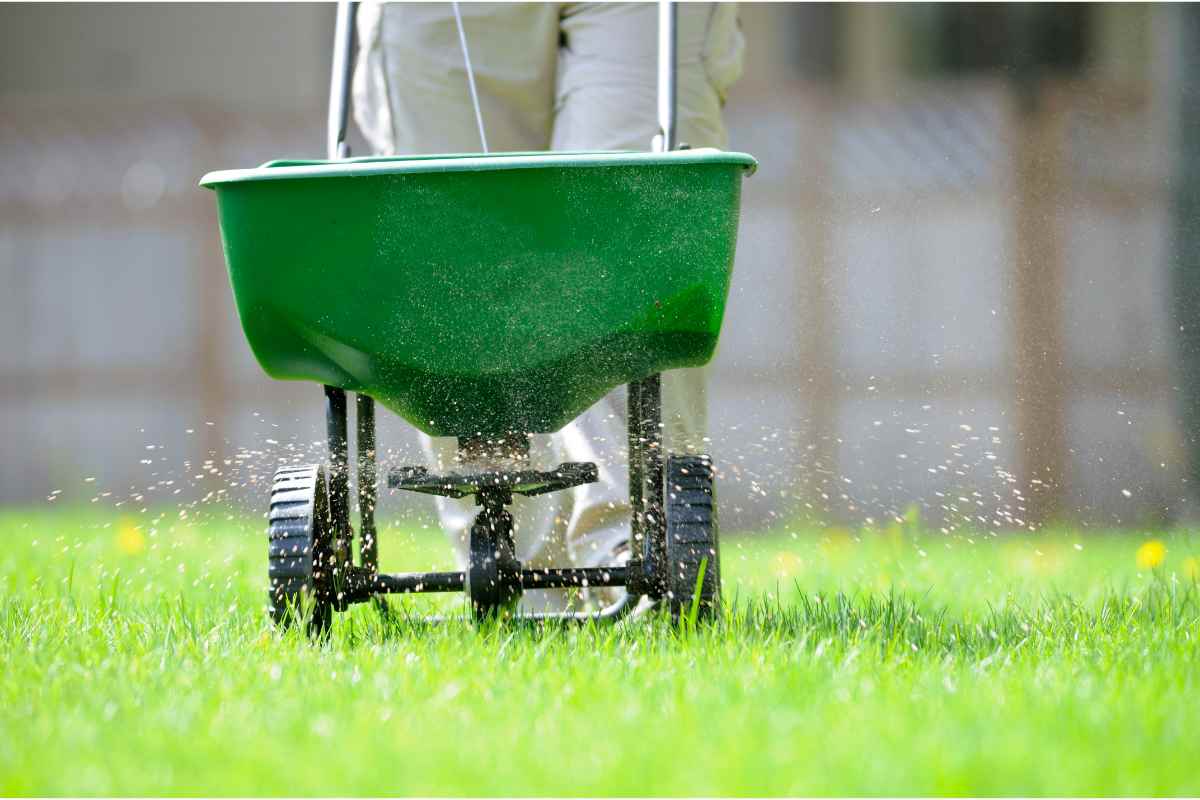
How well did you pay attention in high school chemistry? You probably never guessed pH would one day affect your front lawn. That’s where liming comes in, and we’ll show you why, when, and how to lime a lawn.
If your yellow lawn isn’t responding to fertilizers, it might need a lime treatment. Why? Because when the soil becomes too acidic, it limits the availability of plant nutrients. Adding lime raises the pH and improves nutrient availability, encouraging a healthy lawn.
What is Lime?
Lime is a soil amendment made from ground limestone containing calcium carbonate and sometimes magnesium carbonate. Lawn lime raises the soil’s pH level, making it less acidic.
Whether your lawn needs lime and the quantity of lime you apply depends on the findings of the soil test results. Don’t worry, there are no grades involved here.
Types of Lime
There are different forms of lime you can use for your lawn. When selecting a type of lawn lime, seek advice from a local lawn care expert or follow the recommendations of your soil test to identify the most appropriate type of yard lime for you.
The two main types are:
- Calcitic lime: Also known as calcium carbonate, calcitic lime is the most commonly used type of lawn lime. It raises the soil’s pH level and provides calcium to the soil.
- Dolomitic lime: Dolomitic lime contains both calcium carbonate and magnesium carbonate. It is recommended for lawns with a magnesium deficiency and low pH levels.
What is Soil pH?
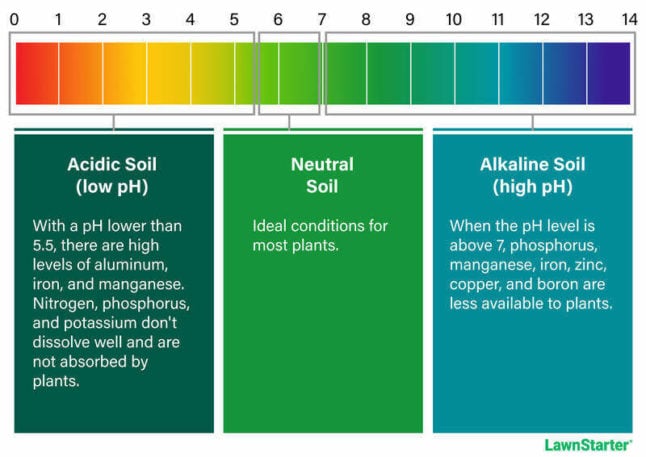
Time to think back to your chemistry lessons: Your lawn’s soil can be classified as acidic, neutral, or alkaline, described by a pH value range between 0 and 14. A pH value below 7.0 is considered acidic, 7.0 is neutral, and a pH above 7.0 is alkaline. For healthy grass, knowing why, how, and when to soil-test your yard is essential.
When to Apply Lime to the Lawn
Fall is the best time to apply lime to the lawn, as it allows more time for the lime to break down. However, the specific timing of putting lime on your grass may vary depending on the type of grass and soil condition.
- For cool-season grasses such as Kentucky bluegrass, tall fescue, and perennial ryegrass, the best time to lime your lawn is during the fall season.
- For warm-season grasses like Bermudagrass, St. Augustinegrass, and Zoysiagrass, it is recommended to apply lime in late spring or fall.
- Lime should not be applied in extreme heat or on a drought-stressed lawn.
- Most lawns benefit from lime application every two to three years. Consult your soil test results for guidance on how often to add lime.
What Does Lime Do For Your Lawn?
When the lawn’s soil becomes too acidic, the general lawn health declines. Adding lime to the yard raises the pH level and brings it closer to neutral. Most turfgrasses require a pH range between 6.0 and 7.0 (although centipedegrass won’t need lime treatment unless its pH falls below 5.0).
Strongly acidic soils, which have a pH less than or equal to 5.5, are prone to the following issues:
- Reduced nutrient uptake: Liming the lawn helps make nutrients like phosphorus, potassium, and nitrogen more available.
- Increased weed growth: Unless you control lawn weeds, they can overtake your yard and outcompete your grass.
- Reduced pesticide effectiveness: If soil is too acidic, it can decrease the effectiveness of some turfgrass pesticides.
- Excessive thatch: Acidic soil decreases the number of microorganisms that help break down certain nitrogen fertilizers and decompose thatch.
- Increased toxicity: Acidic soils often mean a higher availability of aluminum and manganese, which can be toxic to lawn grass.
How to Lime a Lawn
Liming a lawn is very simple and similar to spreading fertilizer. The first step is to conduct a soil test. Once you determine how much lime you need to apply (if any), spread the lime with a fertilizer spreader.
Step 1: Conduct a Soil Test
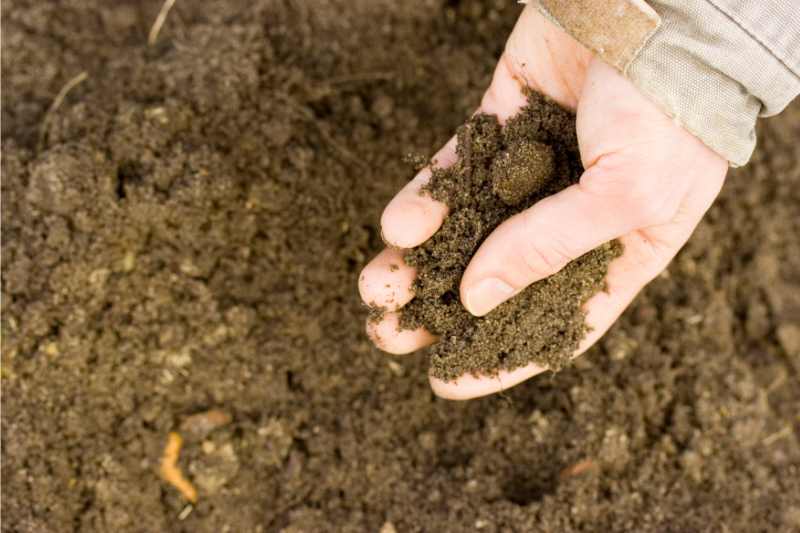
Although DIY soil test kits are available, they won’t provide information about liming your lawn. The results might reveal your soil’s pH but won’t indicate the right amount of lime for your specific soil type.
Instead, you can send a sample to your local soil testing laboratory. Several universities and Cooperative Extensions offer inexpensive, detailed soil testing. Using these soil test results, you can determine how many pounds of liming material to apply per 1,000 square feet.
Step 2: Calculate How Much Lime You Need
We asked if you paid attention in chemistry class, but did you also pay attention in math class? You may need to make a few calculations when determining how much liming material you need because lime varies in purity. How much lime you apply will depend on its purity.
A lime for grass that increases the pH the same amount as pure calcium carbonate is considered to have a ‘calcium carbonate equivalent’ (CCE) of 100 percent. If your lime product does not have a CCE of 100 percent, then you’ll need to adjust the amount you apply. The CCE is displayed on the lime packaging as a percentage.
Determine How Much Lime to Apply:
To determine how much lime to apply, you can follow these steps:
- Refer to the soil test recommendation for the amount of lime per 1,000 square feet needed.
- Identify the CCE (calcium carbonate equivalent) percentage of your lime product. This information is usually provided on the lime packaging.
- Divide the soil test recommendation by the CCE percentage.
- Multiply the result by 100 to get the amount of actual liming material required per 1,000 square feet.
For example, if a soil test recommends 25 lbs of lime per 1,000 square feet, but the liming material you have has a CCE of 90 percent. Here’s how you would calculate the amount of liming material you need.
(25 lbs. per 1,000 square feet / 90 CCE) X 100 = 27.8 lbs. per 1,000 square feet of actual liming material.
Try it Out: Assuming a CCE of 90 percent, calculate how many pounds of lime per 1,000 square feet you’ll need.
Pro tip: Homeowners should never apply more than 50 lbs of liming material per 1,000 square feet in a single application. If the soil test recommends more than 50 lbs or your calculated adjustment is above 50 lbs, apply half of the amount in spring and the other half in fall.
Step 3: Choose Your Spreader
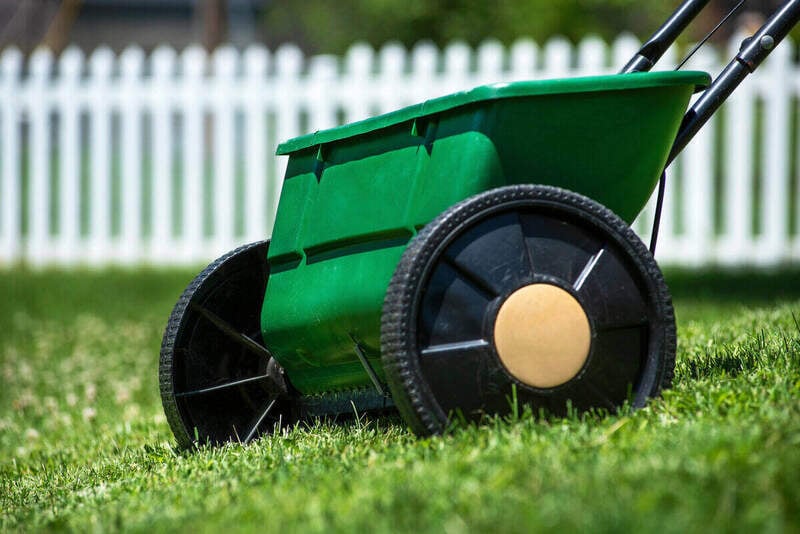
Now that you know how much you need, it’s time to choose a lawn lime application method. A drop spreader or broadcast spreader can work well if you’re using pelletized lime. Spreaders can be found at your local garden center.
Here are some factors to keep in mind:
1. Drop Spreader: A drop spreader is a good choice for applying pelletized lime. It allows for precise application and even distribution. It is recommended to use a drop spreader for spreading pulverized lime as well, as it helps prevent clogging of the spreader outlets.
2. Broadcast Spreader: A broadcast or rotary spreader is another option for applying pelletized lime. It spreads the lime on a broader pattern, making it suitable for larger areas. However, using a broadcast spreader with pulverized lime may require more caution and frequent stirring of the hopper to prevent clogging.
3. Consider the Size of Your Lawn: The size of your lawn will also determine the type of spreader you choose. A drop spreader may be sufficient if you have a small or medium-sized lawn. A broadcast spreader can help cover the area more efficiently for larger lawns.
If you’re applying pulverized lime with fine particles, there are disadvantages to both a drop spreader and a broadcast spreader, so you’ll need to figure out which works best for you.
- The PennState Extension warns that finely ground, pulverized lime can clog the spreader outlets and recommends using a broadcast spreader as long as you frequently stir the hopper.
- On the other hand, the University of Arkansas Cooperative Extension recommends spreading pulverized lime with a drop spreader instead of a broadcast spreader.
If you’re looking for a tool to spread your lime evenly, here are the best fertilizer spreaders available.
Step 4: Dethatch and Aerate (If Needed)
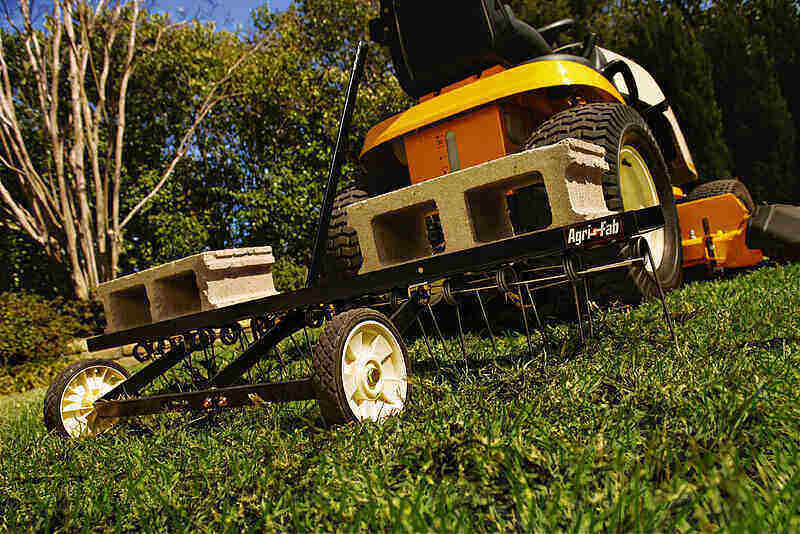
Your lawn won’t absorb the lime if a thick thatch layer blocks the soil or is too compact. Before adding lime to your lawn, get rid of thatch with a dethatcher and loosen compact soil with an aerator. Dethatching and aeration will loosen up and expose the soil, making it more accessible for the lime.
Keep in mind that you may need to perform this step in a different season from when you apply the lime. Here’s why:
The best time to lime your lawn is in the fall. However, warm-season grass shouldn’t be aerated and dethatched in fall. Either dethatch and aerate your warm-season lawn in late spring and follow up with lime OR perform the tasks in late spring and wait until fall to apply the lime.
The timing is easier with cool-season grass because fall is the best time to aerate, dethatch, and lime cool-season lawns.
Pro Tip: Dethatch the lawn before performing aeration.
Step 5: Apply Lime in a Criss-Cross Pattern
Using your spreader (drop or broadcast), spread the lime for your yard just as you would lawn fertilizer. To apply lime in a criss-cross pattern, follow these steps:
- Adjust the spreader to release half of the lime.
- Push the spreader across the lawn, creating rows from north to south, covering the entire lawn.
- Apply the remaining half of the lime in rows from east to west, creating a criss-cross pattern to ensure even coverage.
Step 6: Water the Lawn
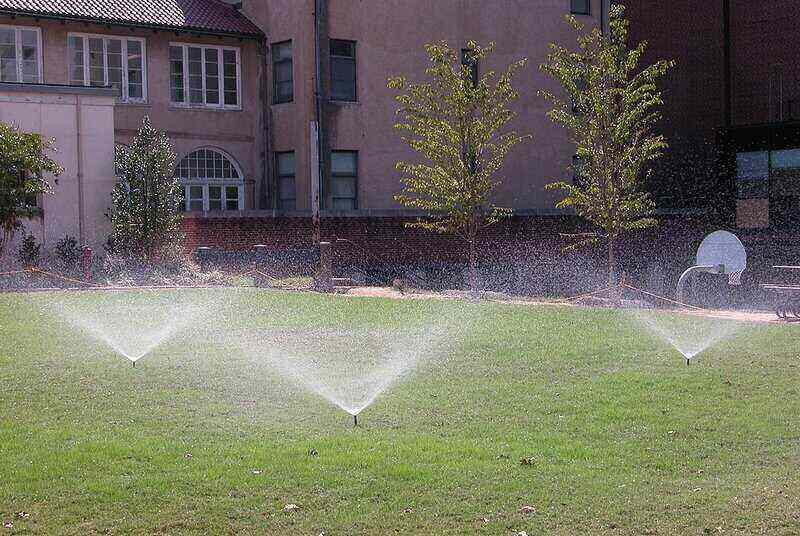
Leaving the lime on your lawn can adversely affect your grass. Watering not only helps keep the grass hydrated but also plays a crucial role in aiding the soil to absorb the lime. By providing adequate moisture to the soil, you can promote your grass’s optimal growth and development, allowing it to thrive.
FAQ About Liming the Lawn
What Causes Acidity in Soil?
Your lawn’s soil can become acidic for several reasons:
- Decomposition of organic matter in the soil.
- Heavy rainfall leaches nutrients that prevent the soil pH from dropping, such as calcium, magnesium, and potassium. These leached nutrients are replaced with acidic ions like hydrogen and aluminum.
- Fertilizers can raise soil acidity over time, especially fertilizers containing ammonium, nitrogen, and sulfur.
- Acid rain containing sulfur dioxide and nitric acid can lower soil pH.
How Can I Correct Alkaline Soil?
Apply elemental sulfur, iron sulfate, or aluminum sulfate to lower your soil’s pH and raise acidity. Refer to a laboratory soil test to determine which soil amendment is best for your alkaline lawn.
Soil is acidic when its pH drops below 7.0. On the other hand, the soil is alkaline if the pH test is above 7.0. Applying the right amount of lime is essential because too much can make the soil too alkaline.
When Will Lime Take Effect?
One to two years is the average time for lime to adjust the soil pH, so don’t expect immediate results after applying lime. Test your soil each year to evaluate the pH and determine how well the lime works. Once the desired pH is achieved, you may only need to lime the lawn once every few years.
When to Hire a Professional
If calculating CCE and spreading lime across the lawn is not how you want to spend your weekend, consider hiring a local lawn care professional. They can handle all your landscaping needs, including liming, mowing, and lawn maintenance. This way, you can enjoy the benefits of a beautiful green lawn without breaking a sweat.
Main Image Credit: groveb / Canva Pro / License
